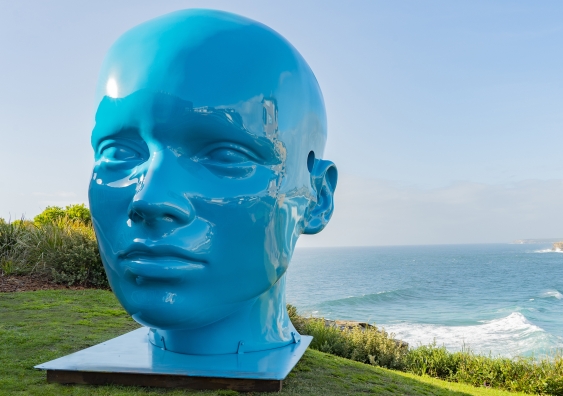A head start on trauma
UNSW's participation in Sculpture by the Sea was a major step in improving understanding of post-traumatic stress disorder, writes Lucy Carroll.
UNSW's participation in Sculpture by the Sea was a major step in improving understanding of post-traumatic stress disorder, writes Lucy Carroll.

Sculpture by the Sea, one of the world’s biggest outdoor sculpture exhibitions, this year featured a work by a UNSW team exploring the complexity of mental illness through video and sculpture.
It was only the second time a video installation was part of the exhibition, now in its 22nd year and visited by about half a million people annually. The work was among 100 sculptures by artists from around the world on the two-kilometre coastal walk from Bondi to Tamarama.
The interactive installation, Look Inside My Mind, was a collaborative work by UNSW’s visual content manager Matthew Gill and his team, with UNSW Medicine, UNSW Psychology and UNSW Canberra.
Positioned at the steps on the edge of Tamarama’s Marks Park, Look Inside My Mind, was a 2.5 metre androgynous, ageless resin head that gave visitors an imagined glimpse into an experience of post-traumatic stress disorder (PTSD) through a looping video seen through multiple viewing stations.
“On closer inspection the viewer realised there were three viewing holes positioned around the head,” said Gill. “Within the sculpture is a three-minute audio and visual sequence that depicted the lived experience of PTSD from the viewpoint of a returning soldier.”
The video was based on research from UNSW Medicine’s School of Psychiatry, UNSW Psychology, and interviews with male and female ex-service personnel who are UNSW Canberra alumni.
One of the contributors whose experiences of living with PTSD informed the video was Benjamin Farinazzo, a former Australian Army Officer and UNSW graduate who was diagnosed with PTSD after his return from East Timor where he served as part of the INTERFET Forces. Experiences of PTSD, such as intrusive thoughts and flashbacks, heightened physiological reactions such as hyperventilation and anxiety, and dissociative symptoms such as derealisation, numbing and detachment, were represented through the video.
Professor Zachary Steel, from UNSW Medicine’s School of Psychiatry, emphasised that raising public awareness of PTSD was crucial in improving understanding about the mental health disorder and removing stigma at a community level.
“PTSD is a major global challenge and capturing an experience of PTSD through video and the eyes of someone who has the disorder is highly valuable in providing a window for others to better understand the debilitating nature of this condition that often can go undiagnosed,” Steel said. “We are all familiar with the term PTSD. What we don’t often understand is how someone can shift from high functioning to sudden impairment. PTSD can dramatically change a life, disconnecting people from family and friends. While it may resolve for some people who develop the condition, all too often it can become a chronic condition and cause difficulties not only for those directly affected but those who support and care for them,” he said.
Professor Steel, a psychologist and the inaugural St John of God Professorial Chair for Trauma and Mental Health, a partnership between Richmond Hospital, UNSW Medicine and the Black Dog Institute, leads a joint research program in mental health, working closely with veterans and emergency service first responders as well as refugees, asylum seekers and populations affected by displacement.